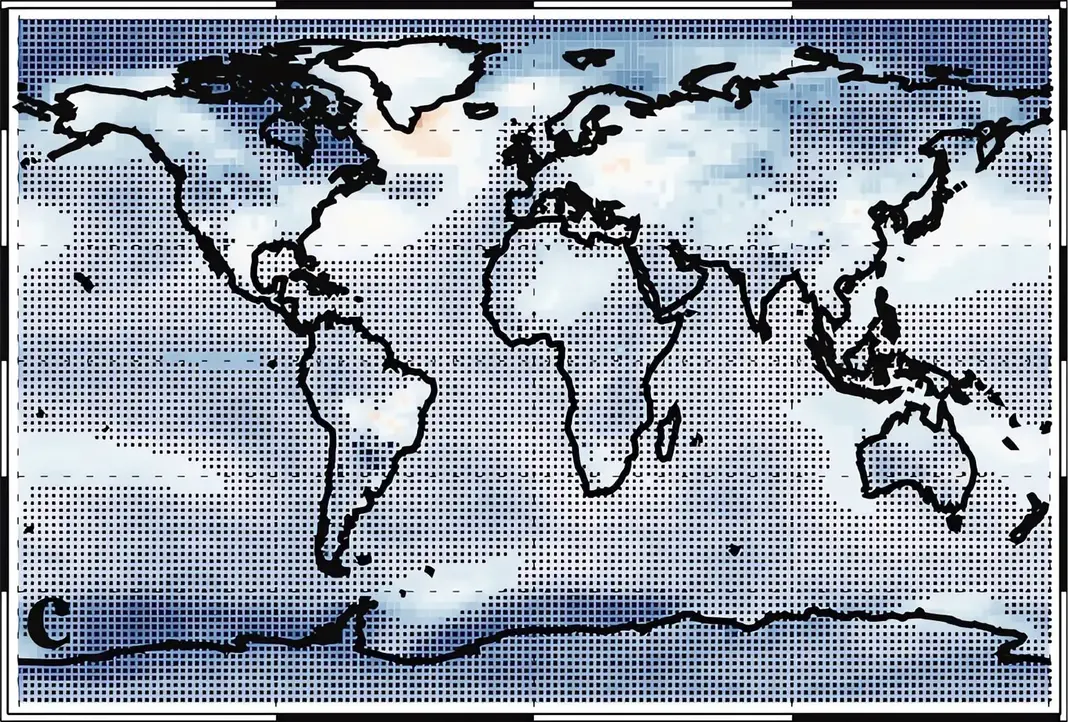Researchers at the University of California, Riverside found that methane not only traps heat in the atmosphere, but also creates cooling clouds that offset 30% of the heat. Absorption of shortwave energy by methane causes a cooling effect and suppresses precipitation increase by 60%. This finding highlights that all known effects of greenhouse gases should be included in climate models.
Most climate models don’t yet account for a new discovery from the University of California at Riverside: methane traps a lot of heat in Earth’s atmosphere, but it also creates cooling clouds that offset 30% of the heat. Greenhouse gases such as methane create a kind of blanket in the atmosphere, trapping heat on the Earth’s surface, called long wave energy, and preventing it from spreading into space. This makes the planet hotter.
“A blanket doesn’t produce heat unless there’s electricity. You feel warm because the blanket blocks your body’s ability to send heat into the air. It’s the same concept,” explained Robert Allen, associate professor in UCR’s Earth Sciences Department.
In addition to absorbing long wave energy, methane also absorbs energy from the sun, known as shortwave energy. “It should warm the planet,” said Allen, who led the research project. “But conversely, shortwave absorption contributes to changes in clouds that have a slight cooling effect.”
(a) long-wave and short-wave effects; (b) long wavelength effects only; and (c) short wavelength effects only. Image credit: Robert Allen/UCR
This effect is described in detail in the journal. Nature Geology along with a second discovery that the research team hardly expected. Although methane normally increases precipitation by taking into account the absorption of shortwave energy, it suppresses the increase by 60%. Both types of energy – longwave (from Earth) and shortwave (from the Sun) – leave the atmosphere more than they absorb. The atmosphere must compensate for the lost energy it receives from the heat generated when water vapor condenses into rain, snow, sleet or hail.
“In fact, precipitation acts as a source of heat that allows the atmosphere to maintain an energy balance,” said co-author Ryan Kramer, a scientist at NASA Goddard Space Flight Center and the University of Maryland, Baltimore County.
Methane changes this equation. By conserving solar energy, methane adds heat that the atmosphere no longer needs to receive from precipitation. In addition, shortwave absorption of methane reduces the amount of solar radiation reaching the Earth’s surface. This reduces the amount of water that evaporates. As a rule, precipitation and evaporation are equal, so a decrease in evaporation leads to a decrease in precipitation.
“This has implications for a more detailed understanding of how methane and possibly other greenhouse gases can affect the climate system,” Allen said. Said. “Short-wave absorption softens the overall warming and rain reinforcement effects, but does not completely eliminate them.”
The research team achieved these findings by creating detailed computer models that simulate both longwave and shortwave methane exposure. In the future, they want to conduct additional experiments to find out how different methane concentrations will affect the climate. Scientific interest in methane has grown in recent years as emission levels have increased. Most come from agricultural activities and landfills as well as industrial resources. Methane emissions are likely to increase as the frozen ground beneath the Arctic begins to melt.
“This has become a huge concern,” said Xueyin Zhao, PhD, UCR Earth and Planetary Sciences. student and co-author of the study. “We need to better understand the implications of this meta by incorporating all known results into our climate models.”
Kramer reiterates the need for more work. “We’re good at measuring the concentration of greenhouse gases like methane in the atmosphere. The goal now is to say as precisely as possible what these numbers mean to us. These kinds of studies lead us to that goal,” he said.













